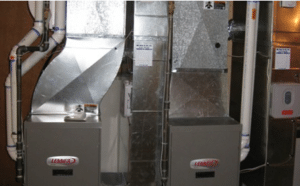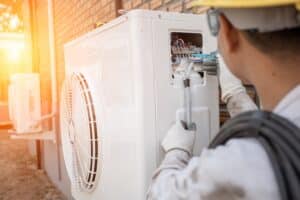Table of Contents
ToggleWhat is a zoned heating system?
Have you noticed that different rooms or areas in your house are warmer or cooler than others? Your south facing kitchen is likely warmer than your north facing bedroom and the thermostat that controls the heat in both rooms is located in the hallway, which likely has a different temperature too. There are lots of reasons why areas of your house might be a different temperature than others, but there is a way to regulate those temperatures so the entire house feels comfortable.
Heating system zoning involves having multiple thermostats throughout your house that are all wired to one control panel. The thermostats constantly read the temperature of their specific location or ‘zone’ and trigger the control panel to open and close dampers within the duct work to keep a consistent temperature for each location.
Misconceptions about zoning:
The most common misconception about a zoned furnace system is that it allows you to keep different rooms of the house at a different temperature than other parts of your home. While this can be partially true, it really depends on the layout and design of your home. The main function of a zoned furnace system is to keep the temperature more consistent throughout the home. In essence, it can increase the comfort level from room to room.
Think about how you light your home. You would not have one light switch that controls all of the lighting in your home. That is why you need to have many light switches, one for each room and often more than one per room, so that you can better control your lighting needs throughout the house. Apply this same concept to your furnace and the level of control you would have with a thermostat in each room or zone of your house. Each thermostat can report back to the furnace and let it know how to operate to make that zone more comfortable, based on your settings.
There are limitations to heating system zoning. It might not be practical to put each individual room on it’s own zone. Instead, your system would be designed so that each group of rooms in that zone would have a common function or similar heating needs. A good example would be to include naturally cooler basement rooms in one zone and warmer, upstairs south facing rooms in another.
Advantages of zoning:
If used properly, a zoned heating system can help you save money on your energy bills. You can choose to not heat or cool the unused parts of your house. For example, you can keep the mostly-vacant guestroom unheated and turn up the heat when it is going to be used. Also, a properly designed heating and cooling zoning system inherently uses less energy than a basic system. That means you are improving your home’s efficiency overall by installing one, even before all the other benefits of zoning kick in.
Zoning also gives you more control. Not only can you choose the temperature setting for each zone in your house, you can also customize things like humidity, fan speed and ventilation all from a user-friendly controller.
What equipment is used for a zoned heating and cooling system?
Zoning does require specific equipment. HVAC companies in Calgary can install a variable speed, modulating unit like the Infinity 98 Gas Furnace which is the preferred unit for zoning systems. Zoning thermostats, sensors and dampers are also installed to your system. Zoning technology also includes equipment for air conditioning and air purification.
Click to Find >>> Calgary HVAC Companies









